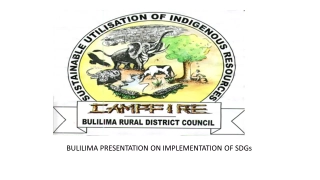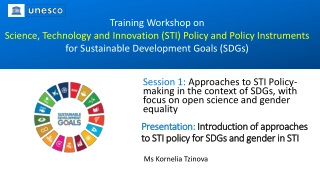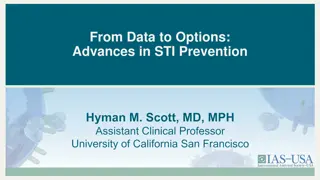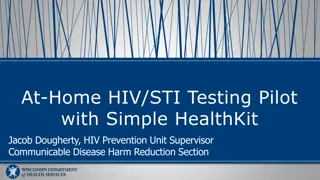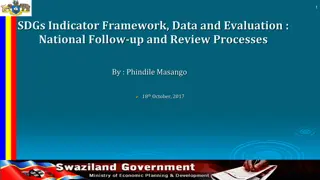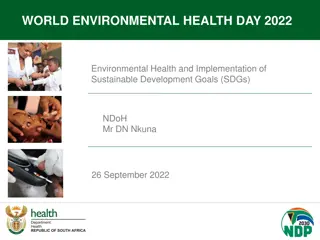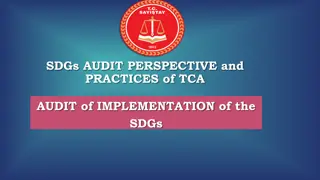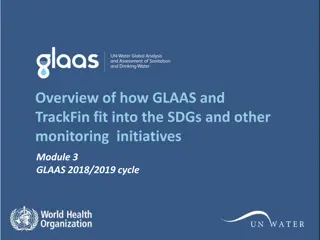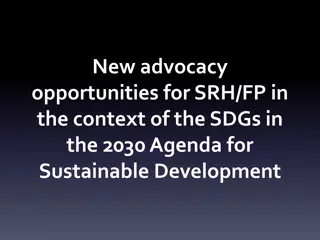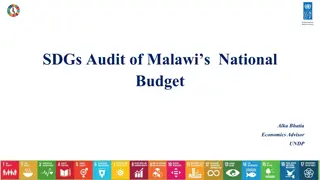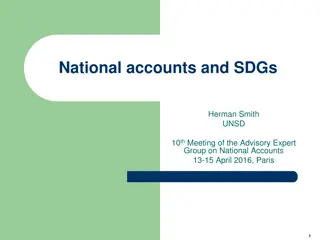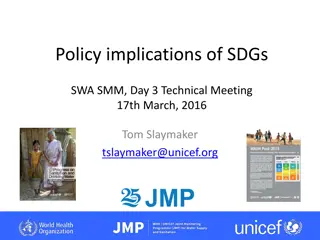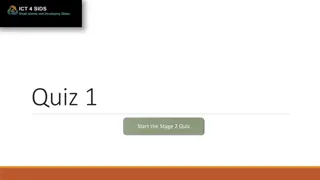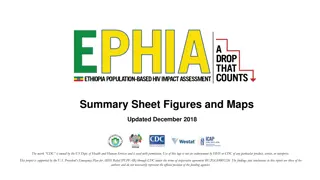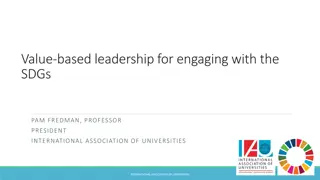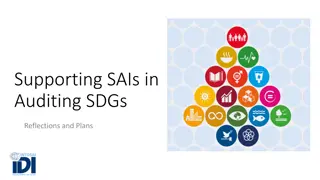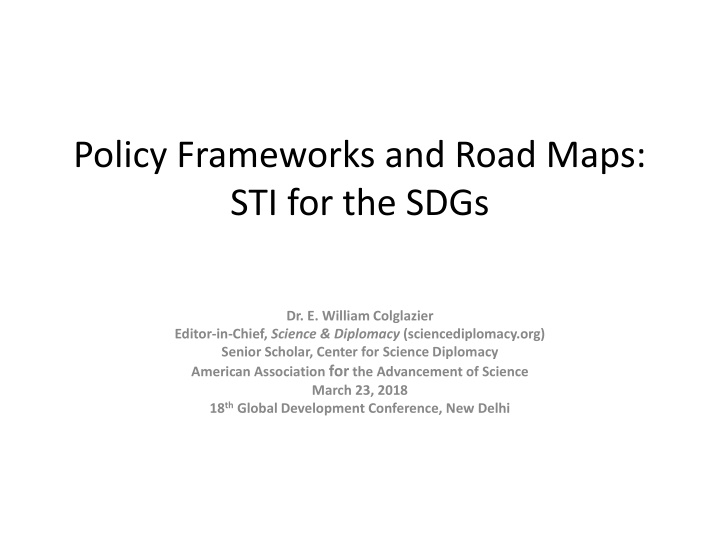
STI for the SDGs: Opportunities, Challenges, and Focus Areas
Opportunities, challenges, and focus areas related to Science, Technology, and Innovation (STI) for achieving the Sustainable Development Goals (SDGs) are discussed. Practical political consensus, detailed targets, and multi-stakeholder engagement are highlighted as crucial elements for progress. However, challenges such as inadequate indicators, weak stakeholder engagement, and lack of real action plans pose obstacles to achieving the SDGs. Emphasis is placed on holistic approaches, capacity building, action plans and roadmaps, public-private partnerships, and deep dives into individual SDGs, particularly Goal 7 on ensuring access to affordable, reliable, and sustainable energy for all by 2030.
Download Presentation

Please find below an Image/Link to download the presentation.
The content on the website is provided AS IS for your information and personal use only. It may not be sold, licensed, or shared on other websites without obtaining consent from the author. If you encounter any issues during the download, it is possible that the publisher has removed the file from their server.
You are allowed to download the files provided on this website for personal or commercial use, subject to the condition that they are used lawfully. All files are the property of their respective owners.
The content on the website is provided AS IS for your information and personal use only. It may not be sold, licensed, or shared on other websites without obtaining consent from the author.
E N D
Presentation Transcript
Policy Frameworks and Road Maps: STI for the SDGs Dr. E. William Colglazier Editor-in-Chief, Science & Diplomacy (sciencediplomacy.org) Senior Scholar, Center for Science Diplomacy American Association for the Advancement of Science March 23, 2018 18thGlobal Development Conference, New Delhi
Opportunities Created by the SDGs Practical political consensus defining sustainable development/social, economic & environmental goals/aspirational/ all countries Longevity to 2030/detailed targets & indicators 17 goals to be achieved together/ synergies maximized & tradeoffs minimized STI essential to achieve progress No one should be left behind/multi-stakeholder engagement required
Challenges to Making Progress Aspirational rhetoric is easy to say/effective policies, funding and sustained action are hard Targets do not cover all essential elements/many indicators are inadequate Voluntary National Reviews (VNRs) are useful, but not real action plans Stakeholder engagement is weak in most countries Not every country is paying attention
Focus Areas Emphasized at 2017 STI Multi-Stakeholder Forum 1. Cross-cutting nature of the SDGs their interdependencies, tradeoffs, and synergies requires holistic approaches and systems analyses 2. STI capacity building in every country is essential, including building human capacity and strengthening the science advisory ecosystem and the STI policy framework 3. Action plans and roadmaps -- integrating SDGs and the role of STI into national planning efforts -- are essential. These roadmaps incorporate processes that require feedback loops, evaluate what is working and not working, and produce continual revisions that create a real learning environment. They are most effective if built up with stakeholder engagement and contribute to smart government. 4. Public-private partnerships are essential as are other efforts that expand involvement with the private sector in creating business opportunities in pursuing SDG solutions 5. Deep dives are needed for each SDG. Action plans and roadmaps are needed for each SDG and even for a number of individual targets.
Deep Dive on GOAL 7: Ensure access to affordable, reliable, sustainable and modern energy for all 7.1 By 2030, ensure universal access to affordable, reliable and modern energy services 7.1.1 Proportion of population with access to electricity (Tier I) 7.1.2 Proportion of population with primary reliance on clean fuels and technology (Tier I) 7.2 By 2030, increase substantially the share of renewable energy in the global energy mix 7.2.1 Renewable energy share in the total final energy consumption (Tier I)
Deep Dive on GOAL 9: Build resilient infrastructure, promote inclusive and sustainable industrialization and foster innovation 9.4 Upgrade infrastructure and retrofit industries to make them sustainable, with increased resource-use efficiency and greater adoption of clean and environmentally sound technologies and industrial processes 9.5 Enhance scientific research, upgrade the technological capabilities of industrial sectors in all countries, encouraging innovation and substantially increasing the number of research and development workers per 1 million people and public and private research and development spending 9.B Support domestic technology development, research and innovation in developing countries, including by ensuring a conducive policy environment for, inter alia, industrial diversification and value addition to commodities 9.C Significantly increase access to information and communications technology and strive to provide universal and affordable access to the Internet in least developed countries by 2020
Harnessing the Contribution of STI for the SDGs Advising on challenges Providing indicators for monitoring progress Advising on policies & actions with periodic feedback on what is working and not working Searching for new innovative solutions Building a robust science-policy interface in every country and internationally

